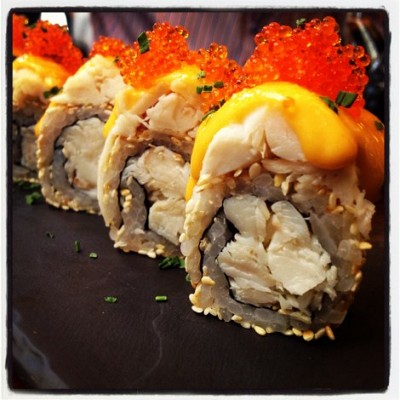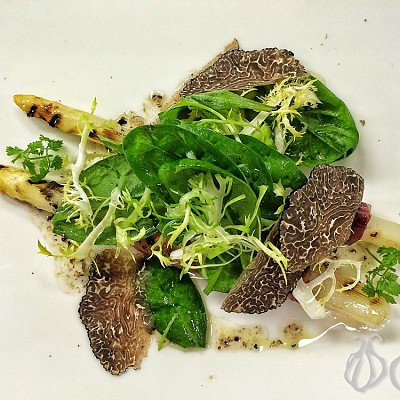Pairing wine with food can elevate a meal from ordinary to extraordinary. The right wine enhances flavors and can create a harmonious dining experience. However, selecting the perfect wine might not be easy with the multitude of options available.
To demystify the process, factor in the dish's profile, texture, and even the occasion. Keep in mind some fundamental principles of food and wine pairing to guide your selections and impress your guests.
The Basics of Wine Pairing
When selecting wine, grasp the overarching principles of wine pairing. The goal is to find a balance between the food and wine that brings out the best qualities in each. A widely accepted guideline is to match the weight of the wine with the weight of the food. Arobust steak pairs well with a full-bodied red wine, whereas a lighter fish dish is better accompanied by a crisp white or rosé.
Importantly, not everyone appreciates heavy and full-flavored wines, making it advisable to know your guests’ preferences in advance. If your go-to choice is kosher wines, you can look into specific wineries like the Wine Warehouse Store and find the right options for your menu. Once you understand acidity, sweetness, and tannins, you have all the knowledge you need to make the right selection.
What to Consider
The first step in pairing wine with any meal involves analyzing the ingredients and cooking methods. tart by categorizing the dish based on primary ingredients—does it revolve around meat, seafood, pasta, or vegetables? Then consider accompaniments such as sauces, spices, and cooking techniques. Grilled meats are complemented well by wines with smokiness, whereas stir-fried dishes with fresh vegetables may pair best with aromatic whites. Reflect on the meal's overall flavor profile. With these factors into account, you can create well-balanced pairings that leave an impression on your guests.
White Wine Pairings
White wines are known for their versatility and can complement a vast array of dishes. They generally possess acidity that can enhance lighter fare, ideal choices for seafood and poultry. Sauvignon Blanc is perfect for shellfish and salads, thanks to its crisp acidity and herbaceous notes. Chardonnay, especially the oaked variation, lends itself well to creamy sauces, a fine match for fettuccine Alfredo. For spicy Asian dishes, off-dry Riesling often shines, balancing the heat with its sweetness. Likewise, Pinot Grigio can enhance the flavors of light vegetable dishes so that diners enjoy a refreshing experience. A quality white wine can elevate the dining experience and allow flavors to shine through harmoniously.
Red Wine Pairings
Red wines bring depth and richness to a meal, companions for heartier dishes. The structure and tannins in red wines can complement grilled meats and stews exceptionally well. A Cabernet Sauvignon pairs wonderfully with a juicy steak due to its tannic structure, which can cut through the meat's richness. Meanwhile, Pinot Noir offers an elegant touch when served with roasted chicken or duck, as its subtle earthiness enhances the dish's flavors without overwhelming them. Zinfandel can be the perfect match for barbecued meats, as its fruit-forward notes and spiciness can provide a delightful contrast. In this way, carefully selecting red wines that accentuate the natural flavors of robust dishes can lead to delightful culinary experiences that guests will remember.
The Importance of Region and Terroir
Each wine region has unique characteristics shaped by its climate, soil, and winemaking traditions. Wines from the Bordeaux region are renowned for their complexity and structure, a perfect match for rich, meaty dishes. On the other hand, wines from cooler regions like Oregon produce lighter, more delicate wines that may be best suited for fine seafood or light pasta dishes.
Local cuisines can guide your pairings: wines originating from the same region as your food tend to harmonize beautifully. Be mindful of these elements to ensure your selections remain true to the spirit of the dishes being served.
Pairing Wine with Cheese and Desserts
Cheese and dessert pairings can pose exciting opportunities to explore complementary flavors. Many cheese varieties pair exceptionally well with specific wines, amplifying both the taste of the cheese and the wine itself. For hard cheeses like aged cheddar, a bold red wine such as a Syrah can create a beautifully balanced pairing. For softer cheeses like Brie, a fruity Chardonnay or even a light-bodied Pinot Noir can enhance the creaminess of the cheese.
For desserts, a sweet wine like Moscato can complement lighter desserts such as fruit tarts, while a rich port wine pairs beautifully with chocolate desserts, creating tempting contrasts. Experimenting with various pairings in these categories will result in delightful discoveries and add another layer of enjoyment to your culinary adventures.
Selecting wines that complement your menu can enhance your culinary experience and delight your guests. When you understand the basics of pairing, the ingredients, and cooking methods, you'll develop your wine selection skills over time. Embracing regional characteristics and unexpected pairings opens the door to exciting culinary explorations. Mastering the art of wine pairing can make any dining occasion memorable.






































